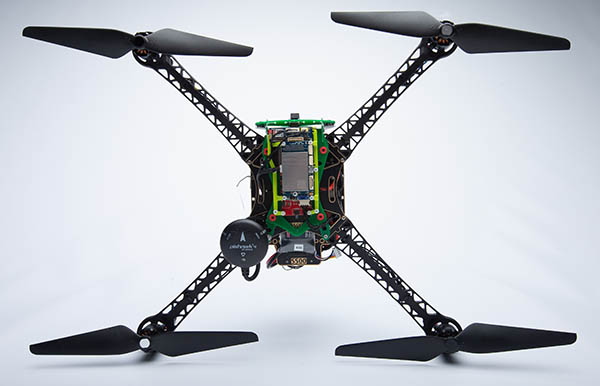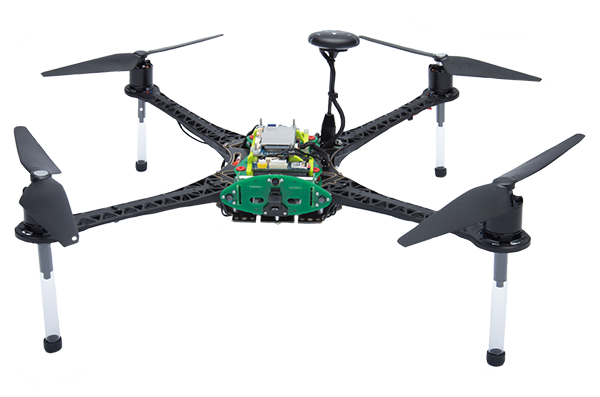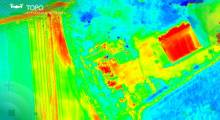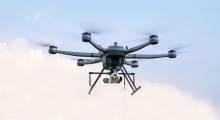Qualcomm Technologies Inc. today announced the Qualcomm Flight RB5 5G Platform, which it described as “the world's first 5G and AI-enabled drone platform and reference design.” The San Diego-based company said the commercial drone platform is now available for preorder through ModalAI.
“Autonomous flight on the 5G network is here now—extending the flight path of drones to increase the value of a broad set of inspection capabilities,” stated Chad Sweet, CEO of ModalAI. “Better yet, the platform is open to everyone. Together, ModalAI and Qualcomm are advancing the adoption and commercialization of drone technology.”
ModalAI spun out of Qualcomm in 2018 and provides robotic and drone perception and communications systems made in the U.S. The company offers custom-designed and plug-and-play modules for autonomous navigation and the use of Wi-Fi, 4G, and 5G networks.
Qualcomm collaborates with spinoff
ModalAI partnered with Qualcomm to design and develop the Qualcomm Flight RB5 5G and plans to support it through its lifecycle with open-source software. The platform is intended to enable developers and original equipment manufacturers (OEMs) to build drone and flight applications using 5G technology.
The Qualcomm Flight RB5 5G Platform has 10 times the computing power of the Qualcomm RB3 robotic platform and supports artificial intelligence, machine learning (ML), and visual-inertial odometry (VIO).
The Qualcomm Flight RB5 5G Reference Drone includes the airframe, an integrated circuit board with the QRB5165 processor, and heterogenous computing at low power. It also has 5G and long-range Wi-Fi 6 connectivity and can support seven cameras at once.

ModalAI discusses drone platform development
Sweet answered the following questions from Robotics 24/7 about the new platform:
Have customers been asking Modal AI and Qualcomm for this 5G and AI technology?

Sweet: Yes, drone developers seek platforms that offer both higher computing and data throughput to meet the needs of the growing drone use cases. There is a market need for powerful computing and AI/ML with efficient, low-power requirements for a broad range of autonomous capabilities. As the use and utility of drones increases, the bandwidth requirements explode, and 5G solves that problem.
Qualcomm and ModalAI collaborated to bring the Qualcomm Flight RB5 5G Platform to accelerate development for commercial, enterprise, and industrial drones. With high computing and ultra-low power consumption and advanced technologies like AI, obstacle avoidance, and VIO, the Qualcomm Flight RB5 5G drone reference design supports longer flight time and runs more applications simultaneously.
What's the power consumption to weight and cost ratio for the new reference design?
Sweet: We will have more information to share shortly at https://docs.modalai.com/
How will AI, machine learning, and VIO provide developers with new levels of autonomy?
Sweet: The Qualcomm Flight RB5 5G Platform is powered by the Qualcomm QRB5165 system on a chip (SoC). The QRB5165 SoC supports autonomous flight using 5G cellular technology and the fifth-generation Qualcomm AI Engine.
This new platform advances the previous-generation Qualcomm Flight Pro. It supports 15 TOPS [trillion operations per second] of deep learning and optimized heterogeneous computing with an eight-core CPU up to 2.84GHz, GPU up to 587MHz, and Flight DSP up to 800MHz.
Will 5G help drone operations beyond the visual line of sight (BVLOS) or in GPS-denied environments?
Sweet: Yes – many enterprise robots are using 4G as a robust telemetry backhaul for tracking. 5G significantly increases network capacity to enable video, edge AI processing, and real-time command and control. 5G connectivity provides ultra-high reliability and low latency connectivity during flight, allowing drones to operate BVLOS.
5G’s low latency is especially useful in navigation scenarios where drones fly in GPS-denied environments. In this use case, drones can’t use GPS and rely on VIO to navigate in areas where the pilot’s view is obscured. 5G will ensure that the drone’s first-person video seamlessly updates on the pilot’s ground-control system in real-time, sending the pilot an accurate view of where the drone is.
What sorts of applications will the 5G capabilities enable?
Sweet: The Qualcomm Flight RB5 5G Platform is purpose-built for drone development with enhanced autonomy and intelligence features, allowing its application across multiple use cases. These include:
- Mission-critical drone applications: Search and rescue, military and defense operations, and aerial inspection in hazardous environments
- Aerial inspection: Asset/infrastructure, agriculture, hazardous situations, and oil refineries
- Indoor inspection: With high-bandwidth, low-latency communication with cloud mapping systems
- Film and entertainment: Vlogging, movies and photography
- Mapping
- Delivery: Package, food, and equipment
Naturally, cybersecurity is a concern with any Internet of Things (IoT)-connected system. Is that up to developers to guarantee, or are any measures built into the platform?
Sweet: As the Qualcomm Flight RB5 5G Platform is an open platform, the developers are responsible for the security of their end product. Still, the system is equipped with secure boot and TrustZone digital rights management (DRM), enabling highly secure end products.
About the Author
Follow Robotics 24/7 on Linkedin
Article topics
Email Sign Up

















